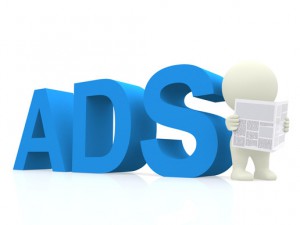
SaaS startups with lean marketing budgets that use PPC have to carefully watch their cost of acquiring customers to ensure they get positive ROI at the least cost. With PPC, companies can generate instant traffic and close sales depending on how targeted the leads are. However, PPC conversions can be affected by where the traffic is sent.
All SaaS companies have to find ways to acquire customers at the lowest cost. Over the last couple of years, inbound marketing techniques as blogging, social media marketing, search engine marketing and PPC have become important in customer acquisition. According to a report by Seohorizon, 28% of companies find PPC important for lead generation.
However, for optimum conversions, marketers have to send PPC traffic to dedicated landing pages rather than the homepage. The homepage contains a lot of information and may therefore not be the best page to qualify users. Instead of the homepage, PPC traffic should be directed to landing pages.
PPC Traffic Converts Best on Landing Pages
Landing pages have higher conversion rates than homepage due to a number of reasons:
Focus. Landing pages address one main subject. You can encourage your users to download your eBook, attend a webinar, start a trial, and so on. Focusing on one theme makes it easy for prospects to take action.
Call-to-Action. The pages have clear call to action for the particular offer presented.
Content. With landing pages, you can offer an in-depth discussion of your solution. You can highlight the benefits and features of your product to help the user decide whether or not to purchase.
Split Testing. You can split test your landing pages to achieve optimum conversion without compromising on the design of your website. Redesigning the homepage for split testing purposes can take a lot of work hours. Moreover, your audience may be uneasy when they find a new homepage design every time they visit.
How To Create Effective Landing Pages
Your design and copywriting team should work together to come up with a winning landing page design. The copy and images used should be tested to find out which ones result in the highest conversions. Hubspot has a great post on creating winning landing pages. Here are a few selected points:
- Use white space. Avoid cluttering your landing page with a lot of content. Visitors should find it easy to read your content and get to the main benefits of the application.
- Have a definite CTA. What do you want visitors to do after reading your landing page? Do you want them to sign up for a trial, register for a webinar or download a whitepaper? Have a clear call-to-action on the page.
- Highlight the benefits. People do not buy products because of their features but because of how they will benefit from them. Educate the visitor on the benefits of your application. Will it save them time, money or improve their efficiency?
- Fast loading pages. Having succeeded in getting your prospect to the landing page, you do not want them to have a poor experience with a slow loading page. If you can, avoid using images and videos that may slow down the page’s loading time.
For teams without design departments, tools such as Unbounce can help you create high converting landing page without the need of complex design or technical skills.
Landing pages are the doorways through which prospects have to pass to take a particular action. Sending PPC traffic on landing pages leads to higher conversions than can be realized from traffic sent to the homepage.
